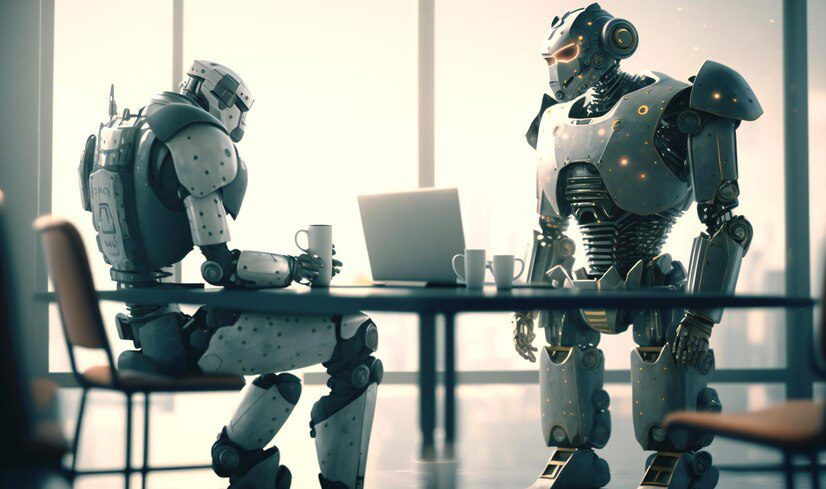Imagine a world where robots aren’t confined to cages behind yellow lines, but instead, work seamlessly alongside humans on the factory floor. This sci-fi dream is becoming reality with the rise of collaborative robots, or cobots for short. These innovative machines are revolutionizing the way we work, blurring the lines between human and machine interaction.
Cobots: Not Your Terminator Wannabes
Unlike their industrial robot counterparts, cobots are designed for one thing: collaboration. Think less “exterminate” and more “high five.” These smaller, lighter robots are built with safety in mind, featuring sensors and rounded edges to prevent injuries when working in close proximity with humans.
Why are Cobots Taking Over the Factory Floor?
The rise of cobots isn’t just about the cool factor (although, let’s be honest, they are pretty darn cool). Here’s why these collaborative robots are becoming a game-changer in the world of manufacturing:
Boosting Productivity with Precision: Cobots excel at repetitive, high-precision tasks, freeing up human workers to focus on more complex and creative activities. This can lead to significant productivity gains, allowing companies to get more done in less time.
The Superpower of Flexibility: Unlike their bulky, inflexible robot cousins, cobots are lightweight and adaptable. They can be easily reprogrammed and redeployed for different tasks, making them ideal for low-volume production runs and dynamic work environments.
Safety First, Always: Safety concerns have always been a hurdle for widespread robot adoption. But cobots are built with safety in mind. Their lightweight design and built-in safety features minimize the risk of injury, allowing humans and robots to work together harmoniously.
A Cost-Effective Solution: Compared to traditional industrial robots, cobots are a more affordable option. Their smaller size and simpler programming requirements make them a cost-effective solution for businesses of all sizes.
Cobots: The Future of Human-Machine Collaboration
The impact of cobots extends beyond the factory floor. These collaborative robots are finding applications in various industries, including:
Healthcare: Cobots can assist with delicate tasks in surgery, perform repetitive lab tasks, and even provide companionship to patients.
Logistics and Warehousing: Cobots can help with order fulfillment, sorting packages, and performing inventory management tasks.
Agriculture: Cobots can automate tasks like weeding, harvesting, and monitoring crop health, making farming more efficient and sustainable.
The Human Touch: Why Cobots Won’t Replace Us
While cobots are taking on some of the heavy lifting (literally), they’re not here to replace human workers. Instead, they’re designed to augment human capabilities. Here’s why the future of work involves humans and cobots working together:
Human Creativity, Robot Precision: Cobots excel at repetitive tasks, but they lack the creativity and problem-solving skills of humans. The human touch will remain essential for tasks that require innovation, critical thinking, and social interaction.
The Synergy of Teamwork: Human-robot collaboration can form a powerful team, leveraging each other’s strengths. Humans can provide the strategic thinking and problem-solving skills, while cobots handle the repetitive tasks with precision and speed.
Upskilling the Workforce: The rise of cobots might necessitate a shift in skillsets for human workers. However, instead of job losses, this change presents an opportunity for upskilling and reskilling the workforce to focus on higher-level tasks that require human ingenuity.
Conclusion
The future of work won’t entail a conflict between humans and machines. Instead, it will be a collaborative dance, where humans and cobots work side-by-side, each playing a vital role in driving innovation and productivity. So, get ready to ditch the fear of robots taking over and embrace the exciting possibilities that collaborative robots offer. After all, the future of work is looking more collaborative (and way cooler) than ever before.







